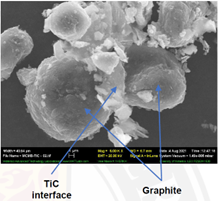Background
To compete with the refuelling times of gas-powered vehicles and promote mass adoption of electric vehicles, a maximum of 15-minute charging time for Li-ion batteries is necessary as per the U.S. Department of Energy.
Current Li-ion battery technologies offer great longevity and power as well as adequate energy density for portable electronic and electric vehicles alike. However, they suffer from severe charge transport limitations at the anode causing lithium plating and dendrite formation that reduce their useful life and make them unsafe (fire hazard).
Description of the invention
Traditional battery electrode architecture utilizes polymer binding of active particles with conductive additives. Waterloo researchers have developed a replacement architecture that utilizes covalent bonding to form a network of bound active particles. This architecture provides a method for increasing electronic conductivity as well as bonding strength (to the current collector) using functional covalent bonding of heterogeneous material including carbonaceous, metallic, and metalloid materials. The covalently joined electrode architecture is compatible with current materials and electrolytes, and it enhances their electrochemical performance compared to reference slurry architecture anodes.
Advantages
The covalently joined architecture is about four times (4x) more electronically conductive than the traditional polymer-bonded architecture using the same materials. The increased conductivity reduces lithium plating by mitigating the potential gradient inside the electrode bulk with the associated additional benefit of lowering the potential fire hazard related to handling lithium materials. It also helps reduce Joule heating and thus enables a more energy efficient and less complex manufacturing process. The new architecture provides a more mechanically robust construction that helps prevents physical delamination from the current collector. Finally, the production of covalently joined architecture is compatible with the slot-die production line currently in operation with an extra sintering step that uses readily available equipment.
Potential applications
- Fully electric vehicles
- Hybrid vehicles
- Auxiliary battery for gas-powered cars
- Electric airplanes
- Portable electronic (cell phones, cameras).
- Power tools


Reference
WatCo 10196
Inventor(s)
Dr. Yverick Pascal Rangom
Dr. Michael Allan Pope
Patent status
US Provisional patent #63/248,293
filed on September 24th 2021
Stage of development
Prototype
Contact
Scott Inwood
Director of Commercialization
Waterloo Commercialization Office
519-888-4567, ext. 43728
sinwood@uwaterloo.ca
uwaterloo.ca/research